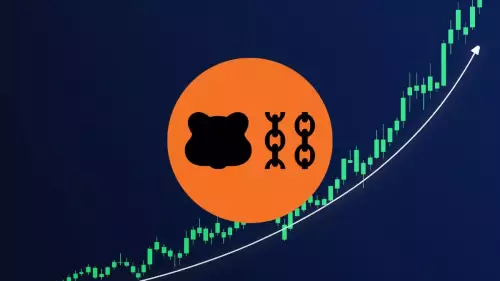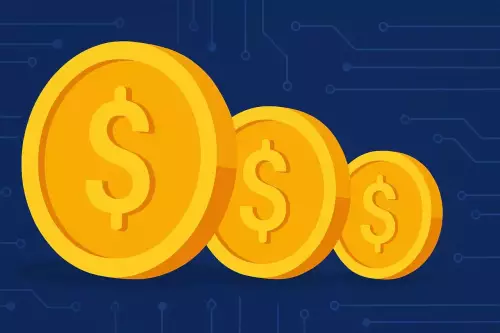 |
|
 |
|
 |
|
 |
|
 |
|
 |
|
 |
|
 |
|
 |
|
 |
|
 |
|
 |
|
 |
|
 |
|
 |
|
Cryptocurrency News Articles
D-Wave Sells Its Quantum Computer to German Jülich Supercomputing Centre, a First for Europe
Feb 17, 2025 at 08:33 pm
On Thursday, Californian supplier of commercial quantum computers, D-Wave Quantum (NYSE: QBTS), announced the sale of its top-end system to German Jülich Unified Infrastructure for Quantum computing.

German high-performance computing (HPC) center JUNIQ has made history by acquiring a top-of-the-line quantum computer from Californian supplier D-Wave Quantum (NYSE: QBTS), marking the first investment by an HPC center in such a system. This move is set to integrate quantum computing into Europe’s first exascale supercomputer, JUPITER.
“With D-Wave’s innovative technology, the integration of the system into JUNIQ and its future coupling with the exascale supercomputer JUPITER, we will take the use of quantum technology in Jülich, and on behalf of Germany and Europe, to a new level,”
Prof. Kristel Michielsen, head of JUNIQ & Quantum Computing at Jülich Supercomputing Centre (JSC)
This acquisition is a significant development for investors tracking quantum computing stocks, as it could pave the way for scaling up the technology. The passively managed Defiance Quantum ETF (QTUM), which holds a broad spectrum of over 70 quantum and semiconductor-related stocks, has seen impressive performance over the past year, tracking 46.78% gains.
D-Wave Quantum, which has a 2.16% weight within the ETF, has driven substantial returns for shareholders, delivering a 255% return on its own in the same period. Over the last month, QBTS stock has outperformed the QTUM ETF at 43% vs 8%, respectively, now priced at $6.53 per share.
But is quantum computing more hype than substance for long-term value investors? Let’s examine the deal between D-Wave and Jülich in more detail to gain insights.
How Quantum Computing Fits in the Picture
In essence, quantum computing shifts the paradigm from deterministic to probabilistic computing, enabling simultaneous parallel processing of 2n states. To illustrate, a classic computer would need to sequentially process a function for each possible 2n state, while a quantum computer can execute them all at once.
However, due to its probabilistic nature, the output from a quantum computer takes the form of a distribution of possible outcomes. In turn, algorithms are deployed to extract meaningful information from that distribution. Or to frame it differently, quantum computers use quantum interference to suppress incorrect outputs and amplify the correct ones.
At a practical level, this poses a massive challenge for quantum computing companies like D-Wave, which must overcome the problem of coherence in such a probabilistic system. A recent academic paper highlighted the longest qubit coherence at 1.48 ms, if this is the window before decoherence occurs, it positions quantum computing inherently for short-computation use cases.
Moreover, the necessary quantum error correction (QEC) further erodes that tiny window, delegating QC to small-scale quantum simulations in applications like cryptography or material science. In other words, the fundamental challenge of qubit destabilization due to environmental interactions (decoherence) positions quantum computing in a complementary role, plugged into larger deterministic systems.
Join our Telegram group and never miss a breaking digital asset story.
D-Wave’s Quantum Computing Angle
The D-Wave system (Advantage 2) acquired by JUNIQ offers 5,000 qubits computing power. This marks a substantial increase from Rigetti’s latest 84-qubit Ankaa-3. For scaling purposes, D-Wave’s 15-way to 20-way connectivity also provides a more robust baseline to correct for errors, which QEC requires.
Furthermore, D-Wave’s approach differs from Rigetti’s discrete gate-based superconducting qubits by utilizing quantum annealing. While annealing leverages lowest energy states, making it more suitable for optimization tasks, Rigetti’s approach aims for greater versatility by plugging into classic computers.
For instance, D-Wave’s quantum computer would be a better fit for portfolio optimization tasks, given that annealing is suited for quadratic unconstrained binary optimization (QUBO) problems.
Rigetti’s approach still requires significant maturation to achieve a universal QC approach for general-purpose computing that relies heavily on error correction and high-fidelity qubits.
In contrast, D-Wave’s quantum annealing is suited for good-enough, approximate solutions due to its higher error sensitivity. Thus, it’s not that D-Wave has a major quantum breakthrough, but its annealing approach developed the farthest for combinatorial optimization use-cases, making it a prime pick for Europe’s supercomputing center.
“Our strategic decision to focus development efforts on enhancing the connectivity and coherence of our next annealing quantum computing system has proven successful,”
Trevor Lanting, chief development officer at D-Wave Quantum
Despite its limitations, Advantage 2 represents a major performance improvement, with doubled qubit coherence time and 5x better performance on problems that need a high degree of precision. So far, D-Wave seems to be the go-to solution for quantum-powered applications, having found itself across the board
Disclaimer:info@kdj.com
The information provided is not trading advice. kdj.com does not assume any responsibility for any investments made based on the information provided in this article. Cryptocurrencies are highly volatile and it is highly recommended that you invest with caution after thorough research!
If you believe that the content used on this website infringes your copyright, please contact us immediately (info@kdj.com) and we will delete it promptly.



















![The Graph Price Prediction [GRT Crypto Price News Today] The Graph Price Prediction [GRT Crypto Price News Today]](/uploads/2025/11/07/cryptocurrencies-news/videos/690d4df44fe69_image_500_375.webp)










































